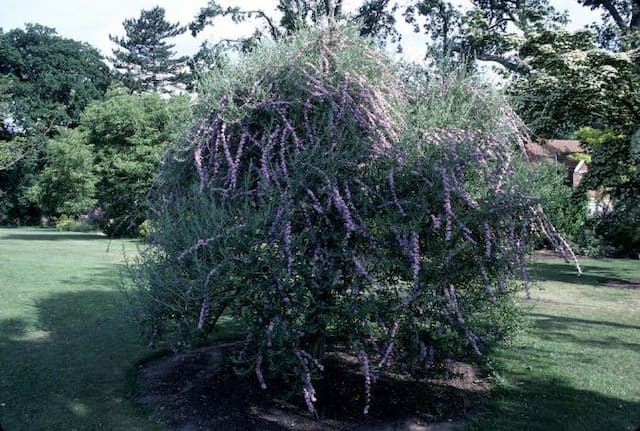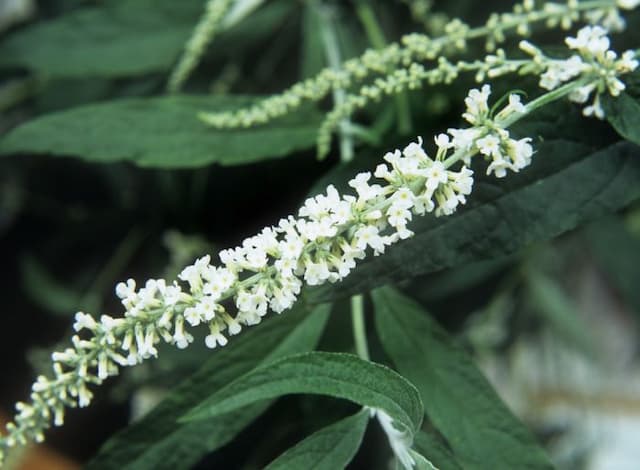Aloha [Raspberries and Cream] Nemesia Raspberries and Cream = 'Fleurras' (PBR)
![aloha [Raspberries and Cream]](/_next/image?url=https%3A%2F%2Fplants-admin.emdemapps.com%2Fimages%2Fplants%2F%2Fimages%2F604b57c0a7fff.png&w=3840&q=75)
ABOUT
[Raspberries and Cream] is a tender perennial that's often grown as a bedding plant. The flowers have reddish-purple upper petals, white lower petals, yellow eyes and are lightly-scented
About this plant
 Names
NamesFamily
Plantaginaceae
Synonyms
Raspberries And Cream Nemesia, Cape Jewels
Common names
Nemesia 'Fleurras'
 Characteristics
CharacteristicsLife cycle
Annuals
Foliage type
Evergreen
Color of leaves
Green
Flower color
Mixed
Height
1 foot (30 cm)
Spread
1 foot (30 cm)
Plant type
Herb
Hardiness zones
9
Native area
South Africa
Benefits
 General Benefits
General Benefits- Attractive Blooms: Nemesia 'Fleurras' produces beautiful raspberry and cream-colored flowers, adding visual appeal to gardens and landscapes.
- Long Flowering Period: It offers a prolonged flowering season, typically from spring to fall, providing continuous color.
- Compact Size: Its compact growth habit makes it suitable for small gardens, containers, and borders without occupying much space.
- Drought Tolerance: Once established, it can withstand periods of drought, making it suitable for xeriscaping or low-water gardens.
- Attracts Pollinators: The flowers can attract bees, butterflies, and other beneficial pollinators, promoting a healthy garden ecosystem.
- Low Maintenance: Nemesia 'Fleurras' is known for being easy to care for, requiring minimal maintenance beyond occasional deadheading and watering.
- Versatility: It can be used in a variety of garden settings, including rockeries, alpine displays, and hanging baskets apart from regular flower beds.
- Cold Hardy: It is relatively cold-hardy, which allows it to withstand cooler temperatures in temperate regions.
- Multiple Uses: The plant is not only good for outdoor landscaping but is also suitable as a houseplant or for adding color to balconies and patios.
- Non-Invasive: Unlike some ornamental plants, Nemesia 'Fleurras' is not known to be invasive, making garden management easier.
 Medical Properties
Medical PropertiesThis plant is not used for medical purposes.
 Air-purifying Qualities
Air-purifying QualitiesThis plant is not specifically known for air purifying qualities.
 Other Uses
Other Uses- Nemesia 'Fleurras' can be used as a natural dye source for fabrics, imparting subtle hues to textiles when treated properly.
- Extracts from the plant may serve as inspiration for perfumery, capturing its unique fragrance for scented products such as candles or potpourri.
- The vibrant petals of Nemesia can be pressed and included in handmade paper for an artistic touch to stationery or craft projects.
- Dried Nemesia flowers can be used to create striking natural art installations, capitalizing on their color gradients and delicate form.
- As part of a sensory garden, Nemesia provides a textural and olfactory experience, making it useful for therapeutic garden designs.
- Nemesia flowers can be floated in bowls of water to create decorative centerpieces for events or as part of a relaxation ritual in spas.
- The contrasting colors of Nemesia 'Fleurras' flowers can be used in landscape design to create a visually appealing pattern or as living mulch.
- The nectar-rich flowers can be included in educational gardens to demonstrate pollination and attract a variety of pollinators.
- Nemesia petals can be used in culinary presentations as an edible garnish, adding a splash of color to dishes.
- During festive seasons, the bright blossoms of Nemesia can be incorporated into wreaths or other decorations for a natural look.
Interesting Facts
 Feng Shui
Feng ShuiThe Nemesia is not used in Feng Shui practice.
 Zodiac Sign Compitability
Zodiac Sign CompitabilityThe Nemesia is not used in astrology practice.
 Plant Symbolism
Plant Symbolism- Joy - The vibrant and cheerful colors of Nemesia often symbolize joy and happiness in one's life.
- Inspiration - The unique pattern and blend of colors on Nemesia flowers can represent creativity and inspire artistic thoughts.
- Friendship - Given its appealing scent and appearance, Nemesia can denote lasting friendships and making new acquaintances.
- Sensuality - With 'Raspberries and Cream' as a variety, this plant embodies the blend of sweetness and pleasure, often associated with sensuality.
- Harmony - The combination of raspberry and cream shades in Nemesia blooms suggests balance and harmony, an emblem of peaceful relationships and environments.
 Water
WaterNemesia 'Raspberries and Cream' prefers consistent moisture, so it should be watered when the top inch of soil feels dry to the touch. This may require watering approximately once or twice a week, depending on climate conditions and soil drainage. Use a watering can or hose to gently water at the base of the plant, avoiding wetting the foliage to reduce the risk of disease. Provide enough water to moisten the soil to a depth of about 6 inches, which might be around 0.5 to 1 gallon for outdoor plants, depending on the size of the plant and environmental conditions.
 Light
LightNemesia 'Raspberries and Cream' thrives best in full sun to partial shade. Ideally, it should receive at least 6 hours of sunlight daily. A spot that offers morning sunlight and some afternoon shade is optimal, as this ensures bright conditions without exposing the plant to the harshest midday sun, which can be important in very hot climates.
 Temperature
TemperatureNemesia 'Raspberries and Cream' prefers cooler temperatures and will perform well in environments where the temperature ranges between 60 and 75 degrees Fahrenheit. They can survive minimum temperatures down to about 30 degrees Fahrenheit but are not tolerant of frost. During hot spells with temperatures consistently above 80 degrees Fahrenheit, the plants may suffer and go dormant until cooler weather returns.
 Pruning
PruningNemesia 'Raspberries and Cream' benefits from occasional pruning to promote bushiness and continuous flowering. Pinch or cut back the tips of the stems every few weeks to encourage branching. Additionally, deadhead spent flowers to keep the plant looking tidy and to encourage more blooms. The best time for heavy pruning is in late winter or early spring, before the onset of the new growth season.
 Cleaning
CleaningAs needed
 Soil
SoilNemesia prefers well-draining soil with plenty of organic matter. A mix of loam, peat, and sharp sand is ideal. An optimal soil pH is slightly acidic to neutral, around 5.5 to 7.0.
 Repotting
RepottingNemesia does not usually require frequent repotting and can often be treated as an annual. If grown as a perennial, repotting every 2-3 years is sufficient.
 Humidity & Misting
Humidity & MistingNemesia enjoys moderate humidity levels but will tolerate a range of conditions, avoiding excessively dry air which can impact flowering and growth.
 Suitable locations
Suitable locationsIndoor
Place in bright, indirect light with good air circulation.
Outdoor
Plant in a sunny spot with afternoon shade.
Hardiness zone
9-11 USDA
 Life cycle
Life cycleNemesia Raspberries and Cream, commonly referred to as Nemesia 'Fleurras', begins its life cycle as a seed that germinates in warm, well-drained soil after the last frost of spring. Upon sprouting, the seedling develops into a young plant with vibrant foliage and establishes a root system. The vegetative stage is marked by rapid growth of leaves and stems, preparing the plant for flowering. The flowering stage occurs when it produces its distinctive bi-colored raspberry and cream blossoms, attracting pollinators and potentially leading to seed production if flowers are fertilized. After the blooming period, if seeds have set, the plant enters the senescence phase where it may die back, especially if it is treated as an annual. However, in milder climates or when given proper care, Nemesia 'Fleurras' may enter a period of dormancy, only to regrow and restart the cycle the following season.
 Propogation
PropogationPropogation time
Spring-Early Summer
Nemesia Raspberries and Cream, also known as 'Fleurras', is typically propagated by seed. The most popular method of propagation for this plant is through sowing the seeds. To propagate Nemesia Raspberries and Cream, seeds should be sown in late winter to early spring. The seeds are fine and should be lightly covered with soil after sowing. They require a warm environment to germinate, ideally around 65 to 70 degrees Fahrenheit (18 to 21 degrees Celsius). It is important to keep the soil moist but not waterlogged during germination. Seedlings will begin to appear in one to three weeks, at which point they can gradually be acclimated to outdoor conditions if the last frost has passed.



![Butterfly bush [Florence]](/_next/image?url=https%3A%2F%2Fplants-admin.emdemapps.com%2Fimages%2Fplants%2F%2Fimages%2F604b5f52d7bb1.png&w=640&q=75)
![Butterfly bush [Marbled White]](/_next/image?url=https%3A%2F%2Fplants-admin.emdemapps.com%2Fimages%2Fplants%2F%2Fimages%2F604b63353832a.png&w=640&q=75)
![Butterfly bush [Nanho Blue]](/_next/image?url=https%3A%2F%2Fplants-admin.emdemapps.com%2Fimages%2Fplants%2F%2Fimages%2F604b55d0a6d2d.png&w=640&q=75)



![Aloha [Honey Dark Yellow]](/_next/image?url=https%3A%2F%2Fplants-admin.emdemapps.com%2Fimages%2Fplants%2F%2Fimages%2F604b53868dde8.png&w=640&q=75)